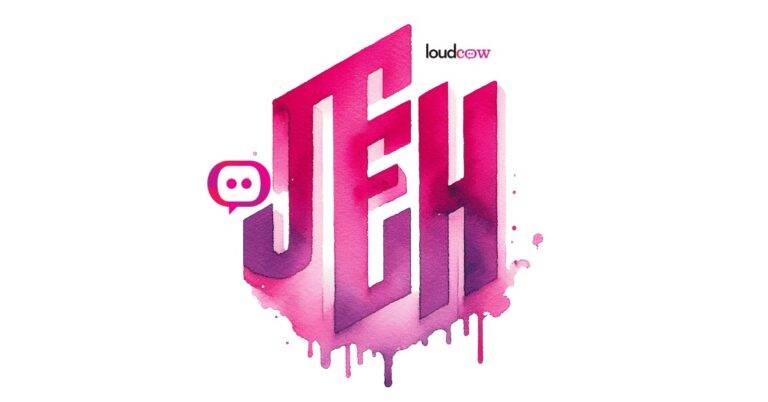Table of Contents
This is for WordPress/WooCommerce people who’ve got product-market fit but are stuck in fulfilment hell.
And those who know the difference between a SKU and a skewer.
Skutopia. Love the name and the robots. But is that $499/month worth it?
Full Disclaimer: I effing HATE subscriptions. And this is not a paid post.
Ok so I was reading Smart Company and I came across an article on a robotic fulfilment service called Skutopia.
Love at first sight.
Lordy lord I can see so many clients killing it with this sort of tech.
Only catch?
The subscription-based, locked-in, what a mo’fo fee annoys me and gets me all cranky pants.
Regardless, some things are worth the locked-in dollars.
It’s exciting tech. It’s also not free. So let’s test the promise, the numbers, and the catch.
What is Skutopia (and why should a WordPress website with a Woo store care)?
Skutopia operates robotic micro-fulfilment centres (AutoStore) with accuracy claims exceeding 99.9% and same-day dispatch cut-offs, supported by a shipping platform that integrates with WooCommerce, Shopify, Magento, and other platforms. In short, they handle the picking/packing and broker sharp courier rates, while your store continues to sell.
They’re positioning themselves as a deep-tech logistics company—RaaS + SaaS—rather than a traditional pallet-and-people warehouse. Founded in 2021, with sites in Sydney and Melbourne. (skutopia.com)
The plan that matters for 3PL: “POWER”
They sell shipping-only plans (for booking couriers) and the robotics-powered 3PL.
3PL – “I smart” way of simply saying “Third Party Logistics”.
If you want the robots to do your fulfilment, you’re looking at the POWER tier—which is $499/month—plus your per-order shipping/handling charges.
That subscription also applies if you’re leaning into their “Now” same-city delivery menu.
Heads-up: Skutopia’s same-city “Now” pricing has visible rate cards by plan (Start/Grow/Scale/Power). Example: Within one city, same-day service costs $12.50 on Power (compared to $18.50 on Start); next-day service costs $10.50 on Power (compared to $16.50); and express service (within 2 days) costs $8.50 on Power (compared to $10.50).
“$499 a month?!” Farrrrrrk. But really. Treat it like rent for scale
Yes, $499/month stings while you’re growing. It’s also the digital equivalent of renting rack space, a label printer, and an operations brain that never sleeps. If the rate discounts and time saved offset that “rent”, you’re ahead.
1. Same-day: $18.50 (Start) vs $12.50 (Power) ⇒ $6 saving/order
2. Break-even ≈ 84 same-day orders/month (499 ÷ 6).
3. Next-day: $16.50 vs $10.50 ⇒ $4 saving/order
4. Break-even ≈ 125 orders/month.
5. Express (within 2 days): $10.50 vs $8.50 ⇒ $2 saving/order
6. Break-even ≈ 250 orders/month.
Mixed basket example: do 150 next-day + 50 same-day in one month, and you save about $900 on delivery alone—enough to cover the sub and then some. (Reality check: these “Now” rates apply to pickups/deliveries in the same city—Sydney, Melbourne, Brisbane. National parcels use their aggregated carrier rates; savings will vary.)
Real-world costs you’ll still have (no magic wands)
Even with robots, boxes don’t unload themselves for free:
1. Inbound fees. The FAQ they provide lists unloading at $2 per 2 cartons or $7 per 7 pallets, plus a putaway fee per item. That’s normal for 3PLs—model it—your pseudo warehouse team.
2. Returns handling. $1.50 per item. Nobody wants a return. Pain in the arse. But do factor it into your margins.
3. Storage & pick/pack. priced separately from courier charges. You’ll get the detailed sheet when you inquire; they claim price transparency and no hidden fees. And after a lovely call from one of their sales peoples I will vouch for that. They were very clear in their costings. (skutopia.com)
The subscription is only part of the total landed cost per order. Don’t skip the spreadsheet.
Why this service is interesting (beyond price)
1. Speed & accuracy for CX. Same-day/next-day options, along with robot accuracy claims, are the difference between a “nice brand” and a “repeat purchase”.
2. WooCommerce integration. Plug in, sync orders, ship. Skutopia states that most integrations are completed quickly (within hours, not weeks).
3. Carrier flexibility. Use their aggregated rates or bring your own accounts if you’ve negotiated specials.
4. Sustainability angle. Publicly stating a carbon-neutral goal by December 2025—proper if your customers care. (skutopia.com)
Where the model can bite
1. Volume sensitivity. If you only ship a handful of parcels/week, the $499 is a significant investment. You’ll need either (a) enough same-city shipments to earn the dollarzzz back via “Now” discounts, or (b) serious pick/pack efficiency gains vs in-house.
2. Scope creep. Returns, rework, and inbound complexity cost money—just like every other 3PL. Budget it.
Consider the benefits that come with advanced fulfilment technology.
3. Not a silver bullet for nationwide rates. The “Now” table is intra-city. Your national/international savings depend on the mix, weights, and carriers. (Their platform aggregates rates, and your mileage will vary.)
WooCommerce setup checklist (the boring ‘gotta do’ bit)
1. Clean product data. Farrrrk. Boring necessary data bit. Weights, dimensions, and barcodes set in Woo. You’ll get better label selection and fewer surcharges.
2. Connect WooCommerce → Skutopia. Install/integrate, map order statuses, etc – some techy setup, but looks pretty average tech person easy
3. Service rules. Determine which SKUs/regions receive same-day, next-day, or express delivery. Automate labels by SLA to avoid human routing errors.
4. Packaging policy.choose standard cartons vs BYO. (If BYO, confirm handling fees and insert policies before peak.)
5. Returns SOP: Set the default return path and refunds logic; be aware that your $1.50 handling fee applies, so you can price exchanges correctly.
So—should you use Skutopia?
1. Yes, if you’re a WooCommerce brand making 100–300+ same-city shipments/month (or a healthy mix of same-day/next-day deliveries) and you want to stop playing warehouse Tetris. The subscription is “ops rent”—paid back by delivery savings and fewer fulfilment mistakes. I bloody lurrve the math.
2. Perhaps if your volume is spiky or mostly national, it’s still worth a trial; however, insist on a lane-by-lane cost model before signing.
3. No, if you’re an early-stage company, shipping a trickle, or your value proposition isn’t delivery-time sensitive. Stick to simpler tools until the maths says otherwise.
Final take (brand nerd note)
Name’s excellent. The voice and product story (robots + “less faff, more parcels”) is strong, and the public rate cards are refreshingly upfront. But don’t drink the Kool-Aid without numbers.
Run your order mix, average weights, and same-city split against their tables. If the delta clears $499 and you’re done wrestling tape guns—ship it.
Literally.
Quick FAQs!
Skutopia x WooCommerce — Quick Bites for Aussie SMBs
What is Skutopia (in plain English)?
A robot-run 3PL + shipping platform built in Australia. Think AutoStore robots (via Swisslog) handling the picking, and software that integrates with WooCommerce to rate-shop carriers, apply rules, and dispatch with over 99.9% accuracy.
How does it play with WordPress/WooCommerce?
- One connection: Install/connect, map order statuses, sync SKUs/barcodes, set weights/dimensions.
- Smart rules: “If Sydney Metro + <5kg → Same-Day”; “If regional → Road Express.”
- Auto paperwork: Labels, pick lists, and packing slips generated from your Woo store data.
- Live updates: Track and write back status updates to WooCommerce, so customers aren’t chasing you.
What do I actually pay?
Two buckets: a platform sub + usage.
- Software (POWER tier): $499/month AUD — unlocks the robots + integrations + support.
- Inbound: Put-away/unloading by carton/pallet/container.
- Storage: Daily-pro-rated pick-faces + pallets.
- Pick & pack: Per order, volume-tiered (e.g. ~$5.50/order at lower volumes → $3.95/order at 10k+). Includes first item, standard packaging, label, and same-day cut-off.
- Extras (optional):
- BYO packaging $1.00/parcel
- Branded sticker/logo $0.60/parcel
- Promo inserts $0.60/parcel.
- Returns processing from $1.50/additional item
- Troubleshooting (your side issues) $55/hr
- Shipping: You can use their aggregated rates (from 100+ carriers) or your own accounts.
Reality check: That $499 sub is the “rent for robots.” If you’re doing tiny volume, it’ll feel steep.
When does the $499 monthly plan make sense?
Use this back-of-the-serviette calcqewlatorrrr…
- If Same-Day/Next-Day saves you ~$ 6 per order versus your current rates, you break even at ~84 Same-Day orders/month.
- Doing 100–300+ metro shipments/month? The maths usually works (and CX uplift is real).
- Doing <20 orders/week? Run the numbers before you jump.
How is this different to a “people + pallets” 3PL?
- Speed/accuracy: Robots cut mispicks; same-day dispatch cut-offs are realistic.
- Scale: Smooth from 10 orders/day to thousands (high surge capacity without hiring temp staff).
- Transparency: Daily, line-itemed billing. Fewer mystery surcharges.
- Sustainability: Targeting carbon-neutral by Dec 2025, claiming ~75% less CO₂ per order vs old-school ops.
Is my SMB the right fit?
Good fit:
- WooCommerce brand with product-market fit.
- Lots of intra-city orders (Sydney/Melbourne/Brisbane Same-Day/Next-Day).
- You care about speed, NPS, and fewer fulfilment stuff-ups.
Probably not (yet):
- Early-stage stores are posting a handful of parcels a week.
- If fast delivery isn’t a value prop for your customers.
- Purely national/international with complex freight—model those lanes first.
What’s the WooCommerce setup process (really)?
- Clean your data in Woo: weights, dims, barcodes (non-negotiable).
- Connect Woo → Skutopia, map statuses/webhooks, test a sandbox order.
- Service rules: Who gets Same-Day, Express, or Road?
- Packaging policy: standard vs. BYO (remember the $1 BYO handling fee).
- Returns SOP: default path + refund logic (budget the returns fee).
- Timeframe: often hours, not weeks — assuming your product data isn’t chaos.
Where are the robots?
- Sydney (Alexandria) & Melbourne (Altona) micro-fulfilment centres.
- Brisbane is covered for premium Same-Day/Next-Day via their network.
- E-com: WooCommerce, plus Shopify/Magento and more.
- Carriers: AusPost, StarTrack, CouriersPlease, Aramex, TGE, DFE, SEKO, DHL eCommerce, etc. Use theirs or yours.
Which platforms and carriers are involved?
Are there any “gotchas” I should budget for?
- Bad product data = surcharges and delays.
- Odd packaging (such as rolls, tubes, and heavy satchels) can push you into pricier lanes.
- Branded unboxing is excellent — just add the per-parcel handling.
- Returns: Set rules now, or they’ll set your margins on fire later.
TL;DR for Woo stores
If you’re scaling metro orders and want faster shipping, fewer errors, and more transparent billing, the $499 + usage model can beat DIY or dusty 3PLs. If you’re still proving demand, park it, tidy your Woo product data, then revisit when volume justifies the “rent.”






